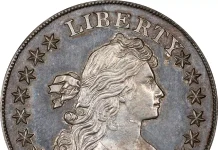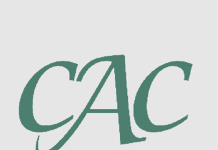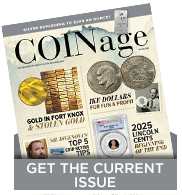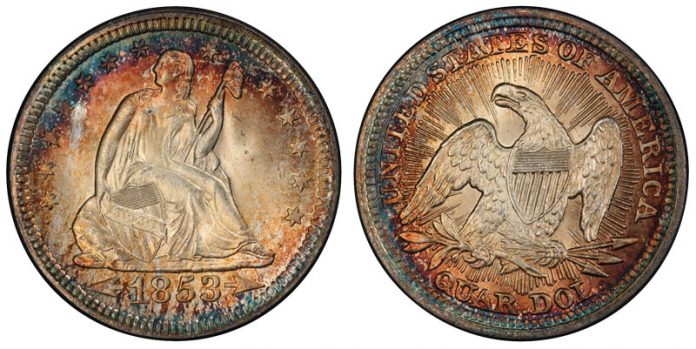
Seated Liberty Silver coin collecting trends have changed with the pandemic. Perhaps the most important has been the trend toward coins that grade “straight” at the main grading services.
Advanced collectors are increasingly choosing a problem-free XF–40 coin, for example, as opposed to an AU–55 “details” that has been cleaned or carries other baggage to be avoided. This caveat, of course, does not apply to the extreme rarities, such as the 1853–O No Arrows half dollars that exist, as the strong demand far outweighs the desire to own a problem-free coin.
Seated Liberty Silver Coin Mints
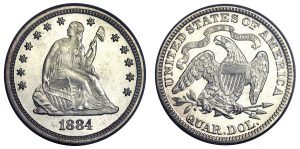
PHOTO COURTESY HERITAGE AUCTIONS WWW.HA.COM
The Seated Liberty silver coins, struck from the 1830s until 1891, are a case in point. The are seven (or six) denominations, depending upon how one counts: half dime, dime, twenty cents, quarter dollar, half dollar, silver dollar, and Trade dollar. Each of these has its own set of special conditions.
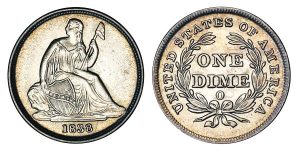
During the pandemic, two nineteenth-century mints, New Orleans and Carson City, became increasingly popular with collectors, the latter especially so. Demand for the Carson City Seated Liberty coins (including the Trade dollar to a somewhat lesser degree) has been strong and continues to grow. New Orleans issues, especially of the late 1830s and early 1840s, have proven to be in demand by advanced collectors because interesting varieties exist.
Talk Boards
Although one would expect increased literature dealing with the Seated Liberty coinage, this has not proven to be the case during the Pandemic. The best evidence of this is to be found on the Liberty Seated Coins talk boards at tapatalk.com. Those collectors interested in this kind of coin should consult the site from time to time to see what is going on with this coinage.
The above-mentioned site not only has general information about the Seated Liberty silver coins but also breaks the information down by denomination. Those who sign up for the site (at no charge) are allowed to post queries and comments about their specialties.
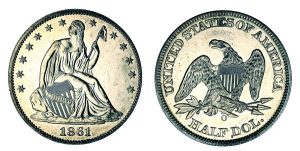
PHOTO COURTESY STACK’S BOWERS
At the present time, and during the Pandemic, the busiest discussions are being held in the half dime posting area but even here they are not all that numerous.
Several individuals have posted questions about half dime varieties with the usual give and take, allowing the reader to learn more about this denomination.
Published References
Perhaps because of the many good references for the remaining Seated Liberty silver coins there were fewer discussions by members on the other denominations. This does not really mean lesser interest but rather the existence of several fine published works on the other coins. Those collecting Seated Liberty half dollars, for example, use the extensive references written by Bill Bugert; these are so complete and well done that public discussions are often not necessary.
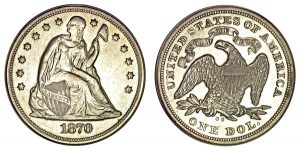
PHOTO COURTESY HERITAGE AUCTIONS WWW.HA.COM
There has been, over the last year, a relative lessening of interest in Seated Liberty silver dollars. The rarities are of course still purchased by collectors but dollars with any kind of problem are not in strong demand unless, as also seen with other denominations, very rare.
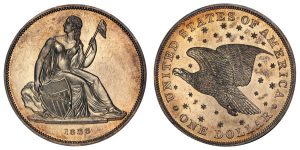
The Gobrecht Journal (which specializes on Seated Liberty silver coins), ably edited by Bill Bugert for several years, has had very little in the way of new discoveries for this series, somewhat of a trend the past few years.
Rarity Scales
The thrust during the Pandemic has been more to determine rarity scales for the numerous varieties that exist, especially for the years prior to the Civil War.
Several of the individual coins have of course remained in strong demand during the Pandemic. One especially well-known example is the 1870–S silver dollar, of which only a few are known. The current book value of $1.5 million in uncirculated does get good attention if offered for sale in this grade at public auction.
The years where Seated Liberty silver carries arrows at the date, 1853–1855 and 1873–1874 have, if anything, strengthened in demand during the Pandemic. The inability to attend major coin shows has led many collectors to attempt type sets or to improve the ones they now have. The coins with arrows at the date have always been key to a good typeset and will remain so for the foreseeable future.
Another area of present-day demand is the Seated Liberty silver coins struck in the 1880s, halves and quarter dollars especially. Only a few thousand were struck each year at the Philadelphia Mint and at present most specimens are in decent condition, as very few actually circulated. Dimes were struck erratically during the 1880s and are much easier to obtain.
Gobrecht Dollars
The Gobrecht dollars of 1836–1839 are something of a special case. Due to what I personally believe to be a long-standing error in the Red Book, there are still collectors who believe that the original dollars of 1838 and 1839 are in existence. They are not, as the only genuine original Gobrecht dollars are dated 1836. Original Gobrecht dollars have the eagle flying upward at about 30 degrees when the coin is properly rotated. Restrikes, produced at the Philadelphia Mint in the late 1850s and again in 1869, have the eagle flying flat when the coin is rotated.
Trade dollars, on the other hand, while still being sought after by serious collectors, have shown no special strength during the pandemic; values are gradually creeping upward, however. The pieces primarily in demand are from the Carson City Mint. The latter are favorites of collectors but the pricing remains relatively steady, perhaps indicating long-term stability for the Carson City Trade dollars.
Seated Liberty Silver Coin Collecting Lessons Learned
The lessons learned during the pandemic have not been all that many, but are key to future collecting. It is important to obtain good coins that are problem-free and preferably at least XF–40. Such coins do have long-term potential, and it is not necessary to obtain strictly uncirculated coins to create decent sets of Seated Liberty silver coins.
It is perhaps worth noting that the Seated Liberty silver coins, while getting increased attention from collectors, do not do as well overall when compared with early (pre–1858) copper cents and half cents or Morgan silver dollars. The perennially popular Morgan dollars might at some future point have lessening collector demand, while Seated Liberty silver coins will always be there for the serious collector interested in the history and economics of the 19th century.
This story about Seated Liberty silver coin collecting trends previously appeared in COINage magazine. Click here to subscribe. Story by R.W. Julian.

